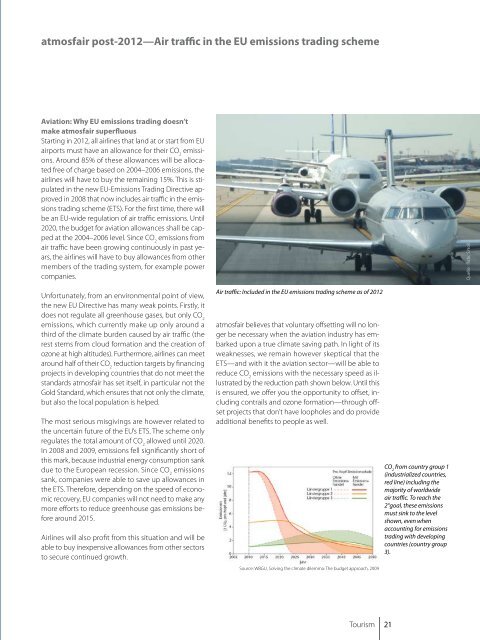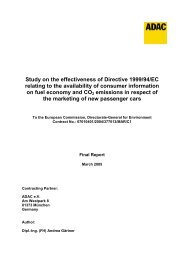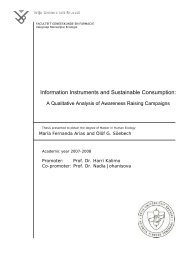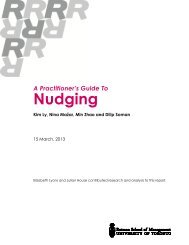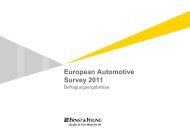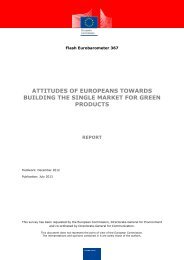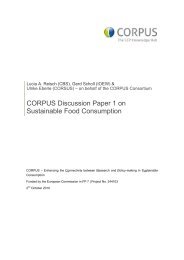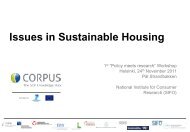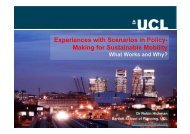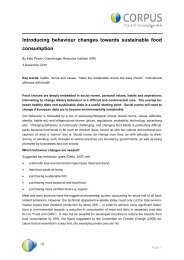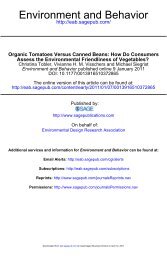Annual Report 2009 - Atmosfair
Annual Report 2009 - Atmosfair
Annual Report 2009 - Atmosfair
Create successful ePaper yourself
Turn your PDF publications into a flip-book with our unique Google optimized e-Paper software.
atmosfair post-2012—Air traffic in the EU emissions trading scheme<br />
Aviation: Why EU emissions trading doesn’t<br />
make atmosfair superfluous<br />
Starting in 2012, all airlines that land at or start from EU<br />
airports must have an allowance for their CO 2<br />
emissions.<br />
Around 85% of these allowances will be allocated<br />
free of charge based on 2004–2006 emissions, the<br />
airlines will have to buy the remaining 15%. This is stipulated<br />
in the new EU-Emissions Trading Directive approved<br />
in 2008 that now includes air traffic in the emissions<br />
trading scheme (ETS). For the first time, there will<br />
be an EU-wide regulation of air traffic emissions. Until<br />
2020, the budget for aviation allowances shall be capped<br />
at the 2004–2006 level. Since CO 2<br />
emissions from<br />
air traffic have been growing continuously in past years,<br />
the airlines will have to buy allowances from other<br />
members of the trading system, for example power<br />
companies.<br />
Quelle: flickr, S.Noll<br />
Unfortunately, from an environmental point of view,<br />
the new EU Directive has many weak points. Firstly, it<br />
does not regulate all greenhouse gases, but only CO 2<br />
emissions, which currently make up only around a<br />
third of the climate burden caused by air traffic (the<br />
rest stems from cloud formation and the creation of<br />
ozone at high altitudes). Furthermore, airlines can meet<br />
around half of their CO 2<br />
reduction targets by financing<br />
projects in developing countries that do not meet the<br />
standards atmosfair has set itself, in particular not the<br />
Gold Standard, which ensures that not only the climate,<br />
but also the local population is helped.<br />
The most serious misgivings are however related to<br />
the uncertain future of the EU’s ETS. The scheme only<br />
regulates the total amount of CO 2<br />
allowed until 2020.<br />
In 2008 and <strong>2009</strong>, emissions fell significantly short of<br />
this mark, because industrial energy consumption sank<br />
due to the European recession. Since CO 2<br />
emissions<br />
sank, companies were able to save up allowances in<br />
the ETS. Therefore, depending on the speed of economic<br />
recovery, EU companies will not need to make any<br />
more efforts to reduce greenhouse gas emissions before<br />
around 2015.<br />
Airlines will also profit from this situation and will be<br />
able to buy inexpensive allowances from other sectors<br />
to secure continued growth.<br />
Air traffic: Included in the EU emissions trading scheme as of 2012<br />
atmosfair believes that voluntary offsetting will no longer<br />
be necessary when the aviation industry has embarked<br />
upon a true climate saving path. In light of its<br />
weaknesses, we remain however skeptical that the<br />
ETS—and with it the aviation sector—will be able to<br />
reduce CO 2<br />
emissions with the necessary speed as illustrated<br />
by the reduction path shown below. Until this<br />
is ensured, we offer you the opportunity to offset, including<br />
contrails and ozone formation—through offset<br />
projects that don’t have loopholes and do provide<br />
additional benefits to people as well.<br />
Source: WBGU, Solving the climate dilemma: The budget approach, <strong>2009</strong><br />
CO 2<br />
from country group 1<br />
(industrialized countries,<br />
red line) including the<br />
majority of worldwide<br />
air traffic. To reach the<br />
2°goal, these emissions<br />
must sink to the level<br />
shown, even when<br />
accounting for emissions<br />
trading with developing<br />
countries (country group<br />
3).<br />
Tourism 21


